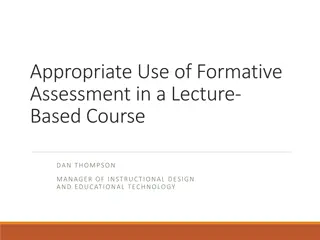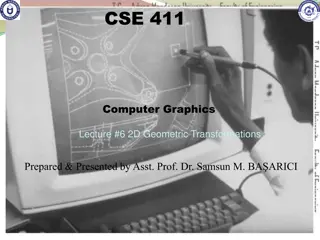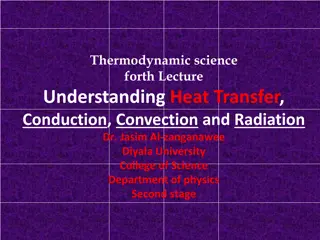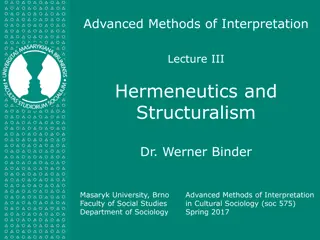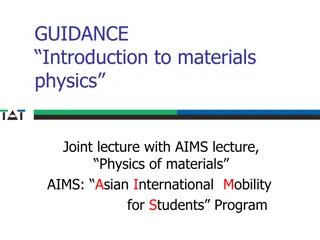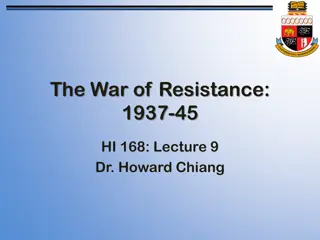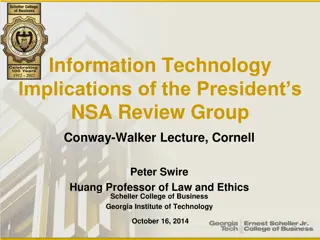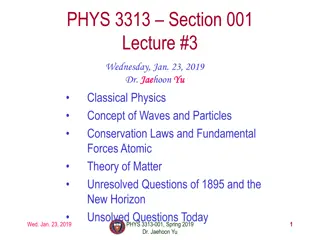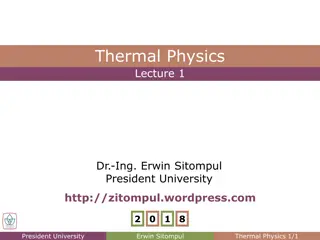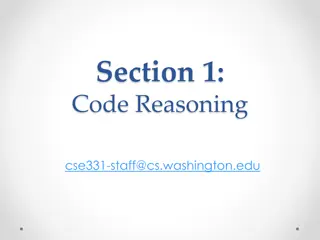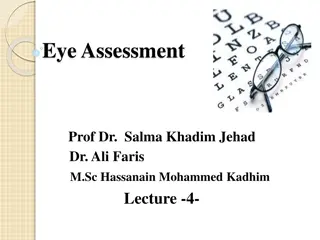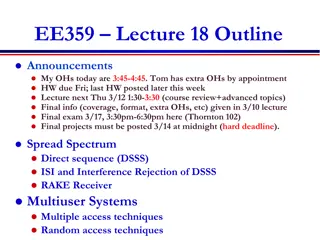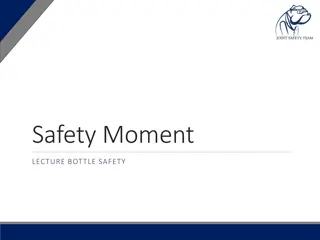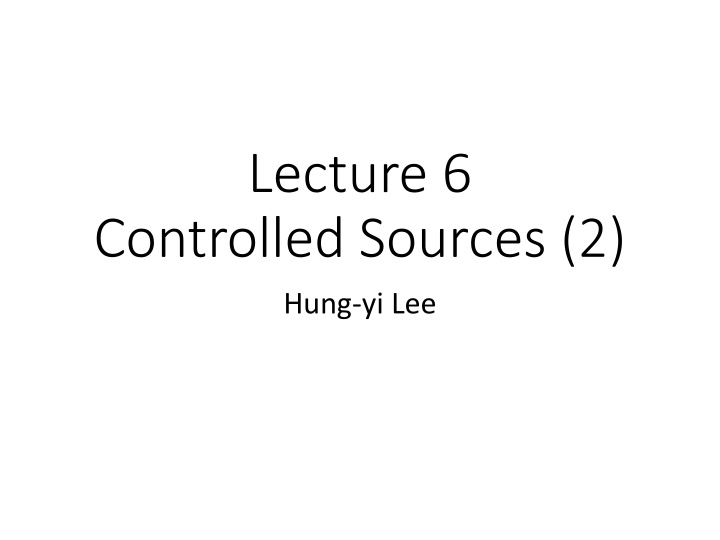
Understanding Node Analysis with Controlled Sources
Explore the concept of node analysis with controlled sources in circuit analysis. Learn how to consider controlled sources as independent sources with unknown variables, and how to represent these sources using node potentials to obtain equations solely based on node potentials.
Download Presentation

Please find below an Image/Link to download the presentation.
The content on the website is provided AS IS for your information and personal use only. It may not be sold, licensed, or shared on other websites without obtaining consent from the author. If you encounter any issues during the download, it is possible that the publisher has removed the file from their server.
You are allowed to download the files provided on this website for personal or commercial use, subject to the condition that they are used lawfully. All files are the property of their respective owners.
The content on the website is provided AS IS for your information and personal use only. It may not be sold, licensed, or shared on other websites without obtaining consent from the author.
E N D
Presentation Transcript
Lecture 6 Controlled Sources (2) Hung-yi Lee
Outline Node analysis with Controlled sources Chapter 4.3 Mesh analysis with Controlled sources Chapter 4.3 Superposition with Controlled sources Chapter 2.4
Outline Node analysis with Controlled sources Chapter 4.3 Mesh analysis with Controlled sources Chapter 4.3 Superposition with Controlled sources Chapter 2.4
Node Analysis - Review Target: Find node potentials Steps: 1. Set a node as reference point 2. Find nodes with unknown node potentials 3. KCL for these nodes Represent unknown current by node potentials
Node Analysis with Controlled Sources Consider the controlled sources just as independent sources But with current or voltage as unknown variables List the equations with node potentials and current or voltage of controlled sources Represent current or voltage of the controlled sources by node potentials Can you we that? Obtain equations only with node potentials
Node Analysis with Controlled Sources Voltage controlled 1v 1v 2v 2v Easy to represent control variable vxby node potentials v vx = v 1 2
Node Analysis with Controlled Sources Current controlled 1v 1v xi xi 2v 2v In most cases, we can represent the control variable ix by node potentials (refer to slides of Lecture 2) Except that when ix is the current of voltage sources
Problem 4.58 CCCS, VCVS 1 v 0 = = 3 3 i i c x 10 v = = v v v c y 1 2 5 v 10 v v v = + + 6 1 1 2 ci Node 1: 0 v v v v + + + = 2 0 1 2 2 c i Node 2: c 5 10 2
Outline Node analysis with Controlled sources Chapter 4.3 Mesh analysis with Controlled sources Chapter 4.3 Superposition with Controlled sources Chapter 2.4
Mesh Analysis - Review Target: Find mesh current Steps: KVL for each mesh Represent the voltage of the elements by mesh current With controlled sources Represent the current or voltage of the controlled sources by mesh currents
Mesh Analysis with Controlled Sources Current controlled 1v 1v xi xi 2v 2v Easy to represent control variable ixby mesh currents
Mesh Analysis with Controlled Sources Voltage controlled 1v 1v 2v 2v In most cases, we can represent the control variable vx by mesh currents (refer to slides of Lecture 3) Except that when vxis the voltage of current sources
(2012) CCVS, VCCS + - c= V I = = 14 . 0 04 I 1 + - 04 V 5 c a + ( ) I . 0 I 2 1 - ( ) ( ) + = + 10 5 20 I I I ( cI Mesh 1: 2 ( 1 1 ) ) + + + = 4 10 5 I I I I I V Mesh 2: 2 2 2 1 c c
Outline Controlled sources Chapter 2.3, 3.2 Node analysis with Controlled sources Chapter 4.3 Mesh analysis with Controlled sources Chapter 4.3 Superposition with Controlled sources Chapter 2.4
Superposition Principle 2x Example 2.10 Find i1 x a i = = i + + i a x + a x 1 1 1 2 2 3 3 + i 1 1 1 2 1 3 3x 1x We can find i1-1, i1-2, i1-3 separately. 1 i 1 i 1 i set x2=0 and x3=0 set x1=0 and x3=0 set x1=0 and x2=0 find find 1 = + + i i i i 1 1 1 1 2 1 3 2 find 3
Superposition Principle with controlled variable Example 2.11 Find i1 ( 1 6 i + = 2x ) ( ) + + 4 2 x i i x i 1 1 2 1 c - - + + + 1 1 1 1x i + 1 = + ci i x x ci 1 1 2 12 3 2 - 1 1 1 1 1 = + = + i x x 8 i x x i 1 1 2 1 1 2 1 60 15 12 3 2
Superposition Principle with controlled variable 2x Example 2.11 Find i1 = = + i i a i x a x 1 1 + 1 2 2 1x 1 1 1 2 set x2=0 set x1=0 The current through 2 is i1-1. The current through 2 is i1-2. Do not turn off controlled sources
Superposition Principle with controlled variable 2x Example 2.11 Find i1 + + - - = = + i i a i x a x + 1 1 + 1 2 2 1x - 1 1 1 2 set x2=0 KVL for the big loop: 6 30 = Open circuit + + 1 = 9 4 2 i i i 5 . 0 i A 1 1 1 1 1 1 1
Superposition Principle with controlled variable 2x Example 2.11 Find i1 + + - - = = + i i a i x a x 1 1 + 1 2 2 + 1x - 1 1 1 2 set x1=0 KVL for the big loop: + i short circuit ( ) = 2 . 0 i A + = 6 9 4 3 2 0 i i 1 2 1 2 1 2 1 2
Superposition Principle with controlled variable 2x Example 2.11 Find i1 = = + i i a i x a x 1 1 + 1 2 2 1x 1 1 1 2 set x2=0 set x1=0 The current through 2 is i1-1. The current through 2 is i1-2. A A 2 . 0 5 . 0 2 + = = + = 7 . 0 i i i A 1 1 1
Superposition Principle with controlled variable 2x Example 2.11 Find i1 1 1 + = 1 1 i x x ci 1x 1 2 12 i 3 2 = + + i i 1 1 1 2 1 3 Can we use superposition in this way? ) 2 ( , 30 2 2 ( ic= 1,x x 1 f 1 1 ( ) 0 ) 3 = = = = = = , 0 f x x i i f x x 1 2 1 3 1 2 c 2
Homework Node analysis with Controlled sources 4.56
Homework Mesh analysis with Controlled sources 4.50 4.51
Homework Superposition with Controlled sources
Answer Node analysis with Controlled sources 4.56: v1=8V, v2=8V
Answer Mesh analysis with Controlled sources 4.50: i1=-2mA, i2=0 4.51: (a) i1=0, i2=-3 (b) v1=12, v2=60, Req=infinity
Answer Superposition with Controlled sources = . 0 47 io A





